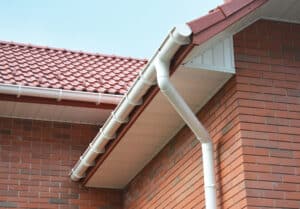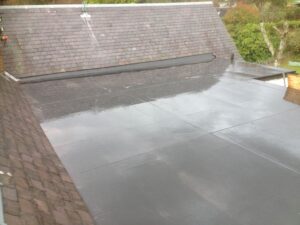
6 Reasons Why Your Gutter is Leaking
A leaking or overflowing gutter can be a frustrating experience, especially since it’s not always possible to identify the cause from ground level.
When making sure your roof is in good condition, one of the things that often gets overlooked is the leadwork. People know to check for cracked and missing slates or tiles, as well as inspect the guttering and the roofline for signs of damage, but many don’t even think about the lead flashing. This can be a problem since your leadwork is just as important as any other part of your roof.
In this article, we’re going to take a look at 7 telltale signs that your leadwork needs to be replaced:
Visible damage
Lead flashing doesn’t last forever. Being exposed to the elements, as it is, will deteriorate over time thanks to adverse weather conditions, extreme changes in temperature, or just as a result of ageing. You should check your existing leadwork for any visible signs of damage, such as cracks, splits, or holes in the lead.
Visibly loose flashing
While inspecting the leadwork for damage, you should also check whether any sections have come loose. Typically, the result of poor installation or thermal expansion and contraction, loose, lifted, or dislodged lead flashing requires immediate attention from a professional roofer to prevent water from getting into your home.
Water stains and evidence of leaks
Speaking of water infiltration, this is a sure sign that something is wrong with your leadwork. While water seeping or dripping into your property during bad weather is hard to ignore, there are other, less dramatic indications. Brown or discoloured water stains on the walls or ceiling are often evidence of leadwork that is no longer providing a watertight seal.
Rust
Another sign that your lead flashing needs to be replaced is the existence of rust or other corrosion on the leadwork. This usually presents itself as reddish-brown patches on the flashing itself and, if left to its own devices, will only get worse, causing more deterioration to the metal.
Increased energy costs
Leadwork plays a key role in preventing thermal loss through your roof by creating a watertight seal where the roof joins with the walls, chimney stack, and other protrusions. If the lead flashing is compromised, it leads to air leaks and more rapid heat loss. This means you need to run your central heating for longer to achieve the same level of warmth. If your energy usage has increased recently and you can’t think of any other reason, it may be time to check your leadwork.
Mould
While not always attributable to damaged leadwork, the presence of mould in the home is certainly an indication of some kind of water ingress. The closer to the roof that the mould appears, the more likely it is to be a result of loose or broken lead flashing.
Daylight is showing through
If you can stand in your attic space with the light switched off and see daylight showing through the roof, either your roofing tiles or your lead flashing are no longer providing a tight seal. Whatever the cause might be, it’s important to get the problem fixed before it gets any worse.
How to tell your leadwork needs fixing: final thoughts
If your South Warwickshire home has damaged or missing leadwork, be sure to have it seen to by trained and experienced professionals. Here at ABC Roofing, we are professional roofers who have been replacing damaged leadwork across the county for more than 35 years. We are a name you can trust to get the job done. Call us on 01926 827 505 or 07867 808 385 to see what we can do for you.

A leaking or overflowing gutter can be a frustrating experience, especially since it’s not always possible to identify the cause from ground level.

Ethylene propylene diene monomer rubber (better known as EPDM rubber) is a hugely useful type of synthetically-produced rubber. Being highly elastic, while also resistant to
| Cookie | Duration | Description |
|---|---|---|
| cookielawinfo-checkbox-analytics | 11 months | This cookie is set by GDPR Cookie Consent plugin. The cookie is used to store the user consent for the cookies in the category "Analytics". |
| cookielawinfo-checkbox-functional | 11 months | The cookie is set by GDPR cookie consent to record the user consent for the cookies in the category "Functional". |
| cookielawinfo-checkbox-necessary | 11 months | This cookie is set by GDPR Cookie Consent plugin. The cookies is used to store the user consent for the cookies in the category "Necessary". |
| cookielawinfo-checkbox-others | 11 months | This cookie is set by GDPR Cookie Consent plugin. The cookie is used to store the user consent for the cookies in the category "Other. |
| cookielawinfo-checkbox-performance | 11 months | This cookie is set by GDPR Cookie Consent plugin. The cookie is used to store the user consent for the cookies in the category "Performance". |
| viewed_cookie_policy | 11 months | The cookie is set by the GDPR Cookie Consent plugin and is used to store whether or not user has consented to the use of cookies. It does not store any personal data. |